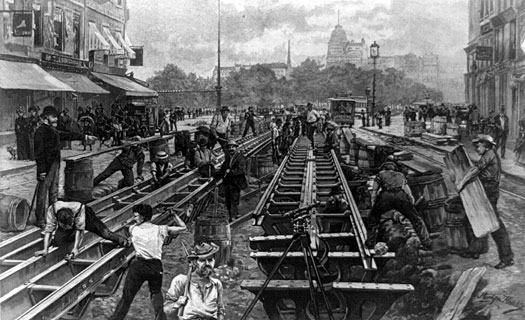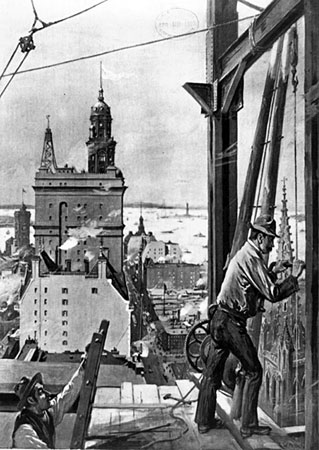Reasons for Collective Bargaining
Most of America’s working class did raise their standard of living during the last quarter of the nineteenth century, but their hours were generally long and the working conditions poor. A steelworker might work a twelve hour day, six days per week. By the late 1800s, there were more than enough workers. Some of those who had moved west and failed at farming moved back to the Midwest and Eastern factory towns. America also sustained a large wave of immigrants who were primarily from European countries. These workers had little job security and low pay. Those who traveled to America under the Contract Labor Act had money deducted from their low wages to pay off their passage to America.

Laborers laying tracks
As technology advanced, many of the skilled laborers had their jobs taken over by machinery. They were forced to find unskilled jobs that lowered their wages even more. At the turn of the century the average American was a low-paid worker who made an average of 22 cents per hour and worked an average of 59 hours a week. Factory workers wanted better wages, shorter working hours, and safer working conditions.

Erecting a 23-story building with few safety standards.